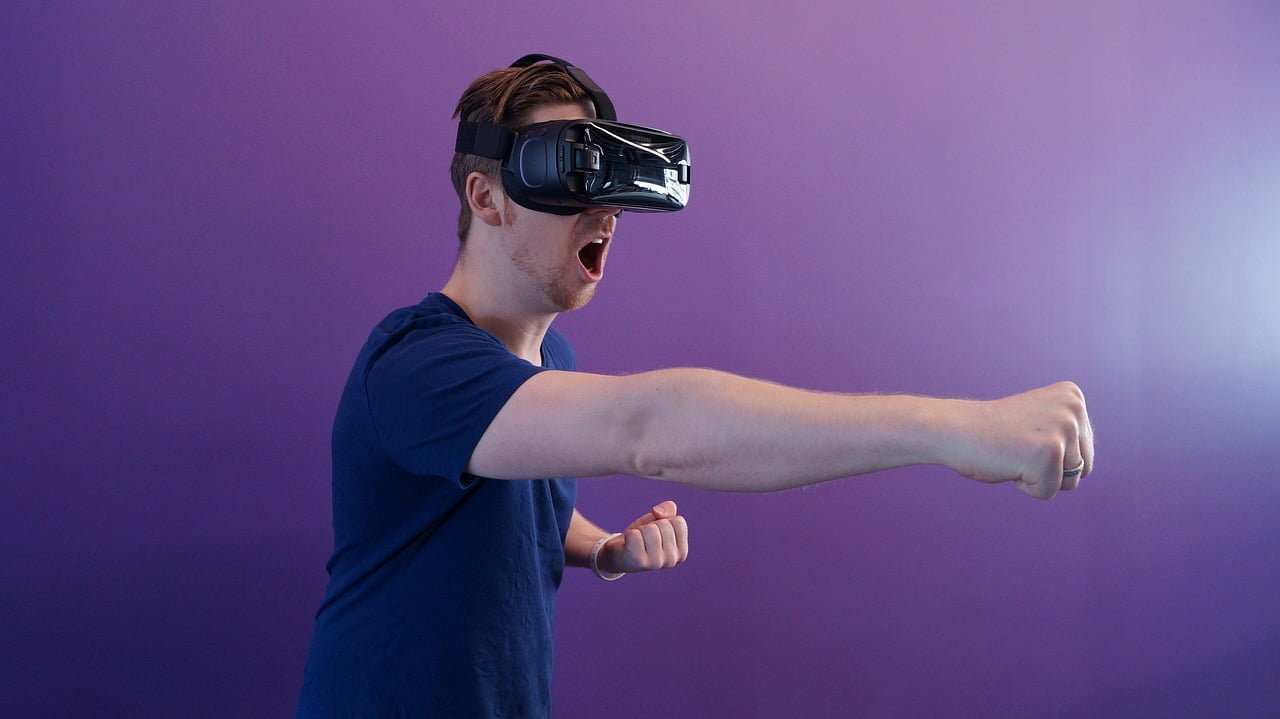As we step into 2024, the martial arts landscape continues to evolve, reflecting the dynamic interplay of cultural, social, and technological influences.
Today, martial arts are more than just combat techniques; they have become a global phenomenon, deeply ingrained in the fabric of fitness, self-defense, and entertainment.
Various martial arts forms, from traditional disciplines like Karate and Taekwondo to modern hybrids such as Mixed Martial Arts (MMA), enjoy widespread popularity worldwide.
The current popularity of martial arts can be attributed to their multifaceted appeal.
For many, martial arts serve as an effective means of physical fitness, offering a comprehensive workout that enhances strength, flexibility, and cardiovascular health.
Additionally, the self-defense aspect of martial arts continues to attract individuals seeking practical skills for personal safety.
This dual role of martial arts in promoting both fitness and self-defense has significantly broadened their appeal across different age groups and demographics.
Moreover, the influence of martial arts extends beyond the dojo and gym, permeating media and entertainment.
The representation of martial arts in movies, television shows, and video games has captivated audiences, fostering a deeper interest and appreciation for these disciplines.
Iconic figures in martial arts cinema, such as Bruce Lee and Jackie Chan.
along with contemporary MMA stars like Conor McGregor, have played pivotal roles in popularizing martial arts on a global scale.
Several key trends are driving the growing interest in martial arts.
Technological advancements have made martial arts training more accessible through
online platforms,
virtual classes,
and apps
that offer personalized training regimes.
Additionally, the integration of martial arts into mainstream fitness programs and the rise of competitive sports leagues have further fueled this interest.
As we look ahead, the continued fusion of tradition and innovation is likely to shape the future trajectory of martial arts.
making 2024 an exciting year for enthusiasts and practitioners alike.
Participation Rates and Demographics

The participation rates in martial arts have seen significant changes in 2024, reflecting broader societal shifts and growing interest in physical fitness and self-defense.
According to recent statistics, approximately 25 million individuals worldwide are actively practicing martial arts, marking a 7% increase from the previous year.
This growth is particularly pronounced in specific age groups, genders, and regions, highlighting diverse patterns of engagement.
One of the most remarkable trends is the rise in female participation in martial arts.
Women now constitute 40% of all martial arts practitioners, a substantial increase from 30% five years ago.
This surge can be attributed to greater emphasis on self-defense training, the growing popularity of female role models in martial arts, and the expansion of women-friendly training facilities.
Programs specifically designed for women, such as self-defense workshops and women-only classes, have also contributed to this positive trend.
Youth involvement in martial arts has also expanded, with individuals under the age of 18 making up 35% of all practitioners.
This demographic shift underscores the growing recognition of martial arts as a beneficial activity for children and teenagers,
- fostering discipline,
- physical fitness,
- and mental resilience.
Schools and community centers increasingly offer martial arts programs as part of their extracurricular activities, further driving this growth.
Regional differences in martial arts participation are also noteworthy. Asia remains a hub for martial arts, accounting for nearly 50% of global practitioners.
However, North America and Europe have seen significant increases, with participation rates rising by 10% and 8% respectively over the past year.
These regions have embraced martial arts not only as a sport but also as a cultural and social activity, promoting inclusivity and diversity.
Overall, the evolving demographics and increased participation rates in martial arts highlight its growing appeal and benefits across various segments of the population.
These trends suggest a promising future for martial arts, with more individuals discovering its physical, mental, and social advantages.
Economic Impact and Industry Growth
The martial arts industry has witnessed substantial economic growth over recent years.
This robust growth is reflected in various revenue streams, including
martial arts schools,
competitions,
merchandise,
and ancillary services.
A significant portion of the industry’s revenue is generated by martial arts schools, which have seen a steady increase in enrollment rates.
The demand for martial arts training has been fueled by a rising interest in physical fitness, self-defense, and holistic wellness.
Competitions, both amateur and professional, contribute significantly to the industry’s financial health.
These events not only generate direct revenue through ticket sales and participant fees.
but also stimulate local economies through tourism and hospitality services.
The merchandising sector, encompassing apparel, equipment, and branded accessories, has also experienced notable growth.
The popularity of martial arts-inspired fashion and gear has created lucrative opportunities for businesses operating in this niche market.
Recent trends indicate a positive trajectory for the martial arts industry.
According to market analysis, the global martial arts market is projected to expand at a compound annual growth rate (CAGR) of approximately 7% over the next five years.
This expansion is driven by the increasing global popularity of martial arts, the growing number of martial arts schools.
and the proliferation of online training platforms that offer accessible and convenient learning options.
Emerging business opportunities in the martial arts sector are abundant.
The rise of digital platforms has opened new avenues for virtual training sessions, online competitions, and e-commerce sales of martial arts-related products.
Additionally, the integration of technology in training, such as wearable fitness trackers.
and virtual reality (VR) training modules, is expected to enhance the overall martial arts experience.
attracting a broader audience and further boosting industry revenue.
The financial health of the martial arts industry remains robust, with continuous investments in infrastructure, technology, and talent development.
As the industry evolves, it presents promising prospects for entrepreneurs, investors, and practitioners.
ensuring sustained economic impact and growth in the foreseeable future.

Technological Advancements in Martial Arts Training
In 2024, technological advancements are significantly transforming martial arts training, making it more accessible and efficient.
One of the most notable developments is the integration of virtual reality (VR) and augmented reality (AR).
These technologies provide immersive training environments where practitioners can simulate real-world scenarios, enhancing their skills without the risk of injury.
VR systems like Oculus Quest and HTC Vive offer martial artists a platform to practice complex maneuvers and techniques in a controlled, virtual setting.
Wearable technology is another area seeing rapid growth.
Devices such as smartwatches and fitness trackers now come equipped with advanced sensors that monitor heart rate, movement, and even technique.
Wearables like the Moov Now and Fitbit Charge 5 provide real-time feedback, allowing martial artists to analyze their performance and make immediate adjustments.
This data-driven approach helps in optimizing training sessions and improving overall efficiency.
Online training platforms are also revolutionizing martial arts instruction.
Websites and apps like MasterClass, Udemy, and MyTrainer now offer a plethora of courses led by renowned martial artists.
These platforms provide video tutorials, interactive lessons, and even personalized coaching.
making high-quality training accessible to individuals regardless of their geographical location.
For instance, platforms like Karate Academy Online allow students to earn belts and certifications through comprehensive online programs.
Innovative tools and apps are continuously emerging, further enhancing the training experience.
Apps like Martial Arts Timer and BudoCode offer features such as customizable training schedules, technique libraries, and progress tracking.
These tools not only aid in structuring practice sessions but also ensure that practitioners stay motivated and on track with their training goals.
The implications of these technological advancements are profound for both practitioners and instructors.
For practitioners, these tools offer a more personalized and efficient training regimen, accommodating various skill levels and learning paces.

Instructors benefit from these technologies by being able to reach a broader audience and provide more tailored guidance, even remotely.
As technology continues to evolve, it is poised to play an increasingly central role in the future of martial arts training.
Health Benefits and Injury Statistics
Martial arts have long been celebrated for their myriad health benefits, encompassing both physical and mental well-being.
Engaging in martial arts practice can significantly improve cardiovascular health, enhance muscular strength, and boost flexibility.
A study published by the American College of Sports Medicine in 2023 found that individuals who practiced martial arts at least three times a week showed a marked improvement in aerobic capacity and muscle endurance compared to non-practitioners.
Beyond physical fitness, martial arts also offer substantial mental health benefits.
Regular training helps in reducing stress levels, promoting mental clarity, and enhancing emotional resilience.
According to a 2023 survey conducted by the National Institute of Mental Health, 75% of participants reported lower levels of anxiety and depression after six months of consistent martial arts practice.
This underscores the potential of martial arts as a holistic approach to mental well-being.
However, like all physical activities, martial arts do carry a risk of injury.
Common injuries include sprains, strains, and contusions, with more severe cases involving fractures and dislocations.
Data from the Journal of Sports Medicine in 2022 indicated that the injury rate for martial arts practitioners is approximately 3.6 injuries per 1000 hours of training.
Despite this, the adoption of preventive measures such as proper warm-up routines.
the use of protective gear, and adherence to safety protocols has been instrumental in mitigating injury risks.
Sports medicine plays a crucial role in maintaining the health and performance of martial artists.
Advances in this field have led to better injury management and rehabilitation strategies.
Recent studies highlight the effectiveness of targeted physiotherapy.
and strength training programs in reducing recovery times and preventing re-injury.
Overall, the integration of sports medicine into martial arts training regimens.
ensures that practitioners can enjoy the extensive health benefits of martial arts while minimizing the risk of injury.
Martial Arts in Competitive Sports
Martial arts have carved out a significant niche in the competitive sports arena.
with various disciplines such as Mixed Martial Arts (MMA), Judo.
and Taekwondo drawing considerable interest.
These competitive forms have grown immensely in popularity.
attracting large audiences and substantial sponsorship deals.
Major tournaments like the Ultimate Fighting Championship (UFC) for MMA, the World Judo Championships.
and the World Taekwondo Championships serve as key highlights in the sports calendar.
showcasing the prowess and skill of notable athletes.
In terms of viewership, MMA leads the pack with the UFC reporting over 3.5 million pay-per-view buys in 2022 alone.
Judo and Taekwondo also command significant global audiences.
particularly during the Olympic Games, where they are staple events.
Participation rates in these martial arts disciplines are equally impressive.
According to recent statistics, there are over 18 million practitioners of Taekwondo worldwide.
while Judo boasts around 28 million practitioners.
reflecting its strong grassroots presence.
Sponsorship in competitive martial arts has seen a robust increase, with major brands investing heavily.
The UFC, for instance, secured a landmark $175 million deal with a cryptocurrency platform.
underscoring the lucrative potential of sponsorships in this sector.
Similarly, Judo and Taekwondo have attracted sponsorships from prominent global brands.
further cementing their status in the competitive sports domain.
An emerging trend that is poised to reshape the landscape of competitive martial arts is the rise of e-sports.
Martial arts-themed video games and virtual tournaments are gaining traction.

offering a new avenue for engagement and competition.
This trend not only broadens the audience base but also presents fresh opportunities for monetization and sponsorship.
The integration of e-sports into traditional martial arts competitions could potentially.
enhance viewership and participation, blending the physical and digital realms in innovative ways.
Cultural and Social Impact
The cultural significance and social impact of martial arts have grown substantially in 2024.
reflecting its role in shaping communities and promoting a diverse, inclusive society.
Martial arts, with their rich heritage and diverse styles.
have become a global phenomenon, fostering cultural exchange and mutual respect among practitioners from different backgrounds.
This is evident in the increasing number of international martial arts festivals.
and competitions that celebrate the art form’s diversity.
One of the most notable impacts of martial arts is its contribution to youth development.
Numerous programs have been established worldwide.
focusing on using martial arts as a tool to instill discipline, confidence, and respect among young people.
For instance, initiatives like “Karate Kids” in the United States.
and “Taekwondo for All” in South Korea offer structured training and mentorship to at-risk youth.
helping them develop a sense of purpose and belonging.
These programs have been particularly effective in reducing juvenile delinquency and improving academic performance.
Martial arts also play a significant role in community building.
Local dojos and training centers often serve as communal hubs where individuals come together, forging strong social bonds through shared practice and mutual support.
This sense of community is further enhanced by the values inherent in martial arts, such as respect, humility, and perseverance.
These values transcend the dojo, positively influencing the behavior and attitudes of practitioners in their daily lives.
Moreover, martial arts have proven to be a powerful tool in crime prevention.
Programs like “Boxing for Peace” in Brazil and “Judo for Peace” in conflict zones have shown remarkable success in diverting youth from violent activities and engaging them in constructive, peaceful endeavors.
These initiatives demonstrate the potential of martial arts to transform lives and promote social harmony.
Stories of individuals who have been positively impacted by martial arts abound.
For example, Maria Fernandez, a former gang member from Los Angeles, credits her transformation to a local Brazilian Jiu-Jitsu program.
Through rigorous training and the mentorship of her coach.
Maria not only left her past behind but also became a role model for other young women in her community.
In essence, the cultural and social impact of martial arts in 2024 is profound, with its influence extending far beyond the dojo.
It continues to shape communities, promote diversity.
and foster cultural exchange, making it an invaluable asset to society.
Future Predictions for Martial Arts
The future of martial arts appears promising, driven by current trends and emerging patterns that suggest significant transformations in training methods, industry growth, and cultural impact.
As we look ahead, it is anticipated that technological advancements will play a crucial role in the evolution of martial arts.
Virtual reality (VR) and augmented reality (AR) are expect to become integral to training regimes.
offering immersive experiences that can simulate real-life combat scenarios.
These technologies will enable practitioners to hone their skills in a control, yet dynamic environment.
potentially accelerating the learning curve.
Additionally, the industry is poise for substantial growth.
The global martial arts market is projected to expand as more individuals seek the physical and mental benefits associated with these disciplines.
Fitness enthusiasts are increasingly turning to martial arts as a holistic approach to health.
combining physical exercise with mental discipline and stress relief.
This growing interest is likely to drive the establishment of more training centers.
as well as the development of online platforms offering virtual classes and tutorials.
Demographic shifts will also influence the future landscape of martial arts.
With a rising interest among younger generations and an increasing number of women participating, martial arts are becoming more inclusive.
This trend not only diversifies the community but also enriches the practice by incorporating varied perspectives and approaches.

Global events and societal changes are expect to further impact the martial arts community.
The recent emphasis on self-defense due to rising concerns about personal safety has led to a resurgence in martial arts training.
Moreover, cultural exchanges facilitated by globalization will likely introduce new styles and hybrid forms.
fostering innovation and cross-cultural appreciation.
Insights from experts highlight that the integration of traditional martial arts philosophies with modern practices will be essential for future growth.
Thought leaders emphasize the importance of preserving the core values and principles of martial arts while embracing new techniques and technologies.
This balance will ensure that martial arts remain relevant and continue to thrive in the years to come.



